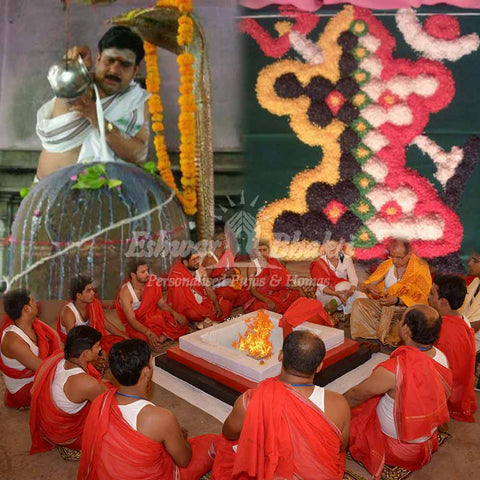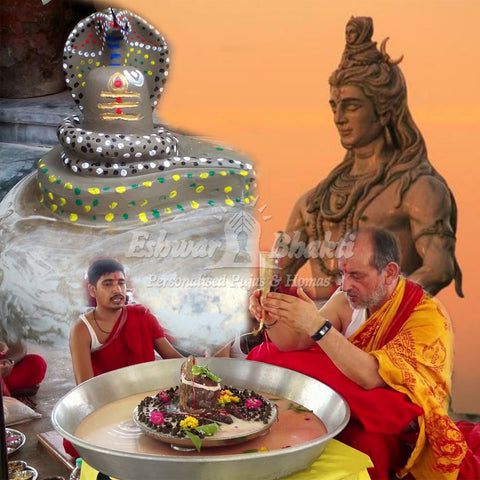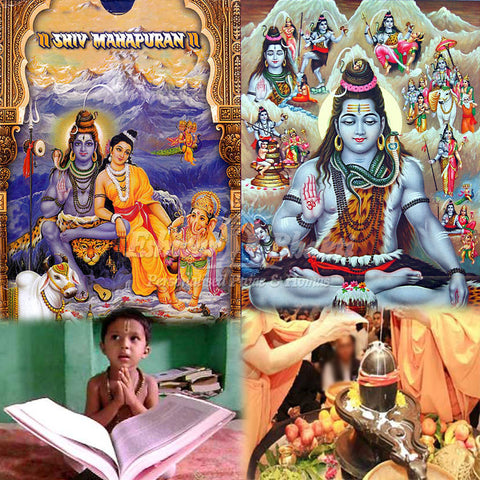Masik Shivratri
 Masik Shivaratri or Masa Shivaratri, one of the most auspicious days in the Hindu lunar calendar, falls on Chaturdashi Tithi during the waning phase of the moon (Krishna Paksha). Every month, Hindu devotees observe fast on this day and worship Lord Shiva and Shakti with immense faith to receive His blessings. There are 12 Masik Shivaratri in a year and each month has its own significance. As per Hindu scriptures, Maha Shivaratri is the most significant among all these 12 Shivaratri that falls during February or March.
Masik Shivaratri or Masa Shivaratri, one of the most auspicious days in the Hindu lunar calendar, falls on Chaturdashi Tithi during the waning phase of the moon (Krishna Paksha). Every month, Hindu devotees observe fast on this day and worship Lord Shiva and Shakti with immense faith to receive His blessings. There are 12 Masik Shivaratri in a year and each month has its own significance. As per Hindu scriptures, Maha Shivaratri is the most significant among all these 12 Shivaratri that falls during February or March.
The word Masik or Masa means ‘monthly’ and Shivratri means ‘night of Lord Shiva’. Devotees from the Hindu religion celebrate this day with their utmost devotion and with a fast from sunrise to midnight. They visit a temple in the morning or evening hour to ascertain (Darshana) the Shivalinga and the statue of Lord Shiva. On this holy day, most of the devotees love to spend quality time inside the temple premises to pray and chant mantras to please the Supreme Lord and to receive His divine blessing to get rid of tension, anger, jealousy, pride, and greed. As per Hindu beliefs, unmarried girls observe a fast on this day so that they can get an ideal life partner, while married women fast for a peaceful married life.
There are many legends and mythological anecdotes that explain the reason behind celebrating this day. A legend from ‘Shiv Purana’ says - Brahma and Vishnu were got into a major tiff about their supremacy over each other. Suddenly, an Infinite Jyoti or fiery Lingam appeared in front of them. The beginning and the end of the Linga couldn’t be found. Hence, both of them agreed that whosoever discovers one end of the Linga would be the greatest God.
Lord Brahma flew upward as a swan to see the beginning of that fiery Linga and Lord Vishnu turned into a boar to find out the bottom. They failed in their attempts after visiting thousand and thousands of miles. However, Lord Brahma lied that He had seen the top part of that fiery Linga. Suddenly, Lord Shiva appeared and revealed the truth about His own incarnation as an infinite Jyotir Linga. As a punishment, Lord Shiva cursed Lord Brahma that no devotee would ever worship Him on the earth. And it was the day of Shivratri when Lord Shiva manifested as a divine fiery Linga which is famous as Shiva Lingam. Thus, devotees of Lord Shiva celebrate this day (night) to get His blessings for a happier life.
The significance of Masik Shivratri: According to Skanda Purana, Maha Shivaratri as well as Masik Shivratri is considered a powerful day to worship the Supreme Lord Shiva. A chapter from this divine textbook explains-
चतुर्द्दशी तथा शंभोः प्रिया नास्त्यत्र संशयः॥
निशीथसंयुता या तु कृष्णपक्षे चतुर्द्दशी॥
उपोष्या सा तिथिः श्रेष्ठा शिवसायुज्यकारिणी॥
शिवरात्रितिथिः ख्याता सर्वपापप्रणाशिनी॥
अत्रैवोदाहरंतीममितिहासं पुरातनम्॥
Meaning: According to the above verses of Skanda Purana, Masa Shivaratri is observed every month on the Chaturdashi Tithi (14th day) of the Krishna Paksha.
It is a favourite day of Shiva Shambhu. There is no doubt about it. One should observe fast till the mid-night of Chaturdashi Tithi (Lunar Day). It is the best way and conducive for the attainment of Sayujya (merging into God’s impersonal effulgence) with Shiva. This holy day Shivaratri is well known as the destroyer of all sins.
• On this day, Lord Shiva is worshipped in a distinctive form of Lingam called ‘Lingodbhavamurti.’ It is a divine form of fire that is beyond the catch hold of any intellectual mind.
• It is believed that chanting of the divine mantra “Om Namah Shivaya” for the entire day and night brings outbound happiness and freedom from all kinds of stress and misfortunes.
• According to legends of ancient India, one can attain liberation (moksha) by mediation and observing a fast on this auspicious day.
• As per Hindu mythology, the observer of the Masik Shivaratri fast develops the mental power to conquer the two natural forces ‘tamas’ guna and ‘rajas’ guna which is the source behind all worldly desires.
Fasting on Masik Shivratri: Keeping fast on this holy day brings miraculous benefits and several stories from Hindu scriptures advocate it. But most of the devotees love to observe a fast on this day due to their love and utmost faith towards the supreme Lord Shiva and to seek His graceful blessings. A devotee can start observing Vrata from Maha Shivratri and continue keeping fast every month on this day. This auspicious ritual is performed during Nishita Kaal meaning midnight.
• Take a bath early in the morning and if possible, go to a nearby river to remove your impurities.
• Pray and complete the pooja at your residence by lighting a Diya and incense sticks.
• After that, visit a temple of Lord Shiva and offer honey, sandalwood paste, milk, yogurt, coconut water, rosewater, bilva leaves, fruits, and flowers to worship Shiva Lingam.
• Apply sacred ash (vibhuti or bhasma) on the forehead for a disciplined mind.
• Then sit in a comfortable position and chant the divine mantra ‘Om Namaha Shivaya’ or hymns, bhajans, to please Lord Shiva. It is to be believed that the mantra is capable of liberating you from your accumulated sins.

Masik Shivratri (the night of Shiva), as the name suggests, is a devotional Hindu festival which is celebrated in the night. It is a day dedicated to the worship of Lord Shiva and His supreme power with austerity and gaiety. On this holy day, His devotees observe a fast and visit temples to praise the Lord by chanting the mantra, hymns, bhajans, and performs Abhishek with milk, water, and bilva leaves to the Shiva Linga. As per tradition, this festival comes to an end during mid-night. So, most of the devotees like to spend the sleepless nights inside the temple premises or at their homes.
As per the legend, worshiping Lord Shiva with a pure heart on this day brings good fortune as well as endless possibilities such as spiritual success, diseases free life, and happiness.




